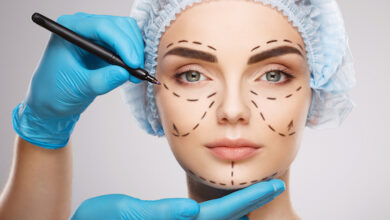When to Consider Cosmetic Dermatology for Aging Skin

Aging skin undergoes numerous changes over time, including a decrease in elasticity, the development of wrinkles, and a duller complexion. For individuals seeking to maintain or restore a more youthful appearance, cosmetic dermatology offers a variety of solutions. These treatments address the visible effects of aging and may appeal to those wanting to enhance their skin’s vibrancy. How do I determine the right time to explore these treatments? Here’s a guide to help assess your needs and options.
Understanding Signs of Aging Skin
By the mid-30s, subtle signs of aging can become more noticeable. Fine lines are among the earliest changes, sometimes developing around the eyes and mouth. A reduction in collagen and elastin levels contributes to sagging skin, while environmental factors like sun exposure may result in uneven pigmentation or age spots. These changes progress with time, which may influence the desire to explore options for skin rejuvenation.
Changes in skin texture and hydration levels can also impact confidence in personal appearance. Declining oil production and slower cell turnover may lead to a dull complexion or dryness. These shifts can prompt individuals to evaluate treatment options that offer both functional and aesthetic benefits. Cosmetic dermatology focuses on treatments designed to improve the appearance of the skin. These solutions range from non-invasive procedures to more advanced techniques tailored to different goals. Among the options are medicines that target skin texture, pigmentation irregularities, and laxity.
Patients looking for non-invasive procedures may consider chemical peels, which gently exfoliate the skin to improve tone and texture. Laser therapies are another popular choice for those aiming to reduce age spots or fine lines. For more pronounced concerns, injectable treatments such as dermal fillers and neuromodulators may provide a temporary but noticeable enhancement.
Deciding When to Begin Treatment
Recognizing the right time to consider cosmetic dermatology depends on both personal preferences and skin conditions. Some individuals may pursue early intervention, addressing minor concerns before they develop into more significant issues. Preventative treatments, such as light chemical peels or laser resurfacing, may delay visible signs of aging.
Others may decide to explore dermatological treatments as signs of aging become more pronounced. Larger concerns, like significant volume loss or deeper wrinkles, may respond well to more targeted procedures. Timing can vary greatly, and personal priorities sometimes influence this decision. Lifestyle factors like exposure to sunlight and levels of stress can also affect skin aging, prompting earlier or later interest in treatment.
Considering Starting Treatments
Understanding the nature of each treatment may inform the decision-making process. Treatments like neuromodulators typically require regular follow-ups to maintain results, while others, like certain laser sessions, may involve downtime. Weighing the time commitment, associated costs, and desired outcomes allows for informed choices. Consistency with skincare routines can complement dermatological treatments, making sunscreen, moisturizers, and other regimens integral to maintaining long-term skin health.
Achieve Healthier Skin With Cosmetic Dermatology
Cosmetic dermatology presents diverse options for addressing aging skin, each effective in improving both appearance and texture. Understanding your skin’s needs and discussing them with a dermatologist enables you to explore treatments suited to your goals. Stay proactive about skincare, implement healthy routines, and consult with experts to achieve the renewal you’re seeking. Interested in learning more? Reach out today to schedule a consultation and explore the best healthy, youthful skin options.





